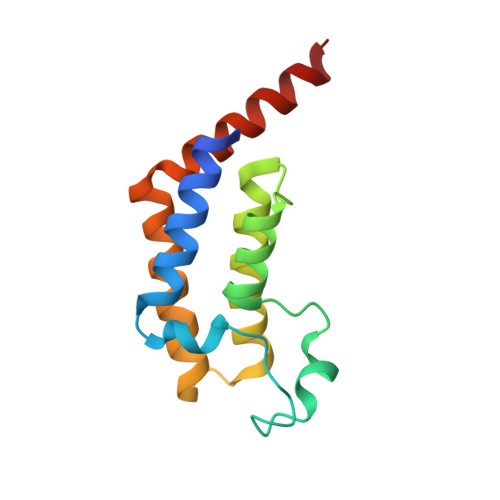Structural insights into acetylated histone ligand recognition by the BDP1 bromodomain of Plasmodium falciparum.
Singh, A.K., Phillips, M., Alkrimi, S., Tonelli, M., Boyson, S.P., Malone, K.L., Nix, J.C., Glass, K.C.(2022) Int J Biol Macromol 223: 316-326
- PubMed: 36328269
- DOI: https://doi.org/10.1016/j.ijbiomac.2022.10.247
- Primary Citation of Related Structures:
7M97 - PubMed Abstract:
Plasmodium falciparum requires a two-host system, moving between Anopheles mosquito and humans, to complete its life cycle. To overcome such dynamic growth conditions its histones undergo various post-translational modifications to regulate gene expression. The P. falciparum Bromodomain Protein 1 (PfBDP1) has been shown to interact with acetylated lysine modifications on histone H3 to regulate the expression of invasion-related genes. Here, we investigated the ability of the PfBDP1 bromodomain to interact with acetyllsyine modifications on additional core and variant histones. A crystal structure of the PfBDP1 bromodomain (PfBDP1-BRD) reveals it contains the conserved bromodomain fold, but our comparative analysis between the PfBDP1-BRD and human bromodomain families indicates it has a unique binding mechanism. Solution NMR spectroscopy and ITC binding assays carried out with acetylated histone ligands demonstrate that it preferentially recognizes tetra-acetylated histone H4, and we detected weaker interactions with multi-acetylated H2A.Z in addition to the previously reported interactions with acetylated histone H3. Our findings indicate PfBDP1 may play additional roles in the P. falciparum life cycle, and the distinctive features of its bromodomain binding pocket could be leveraged for the development of new therapeutic agents to help overcome the continuously evolving resistance of P. falciparum against currently available drugs.
- Department of Pharmacology, Larner College of Medicine, University of Vermont, Burlington, VT 05405, USA.
Organizational Affiliation:
















